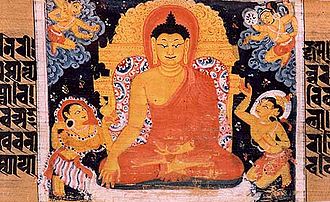
Central, and essential to the practice of Buddhism are the Four Noble Truths Of Buddhism. These four truths are the basis for all Buddhist thought, and focus on the nature of what Buddhists refer to as dukkha or as it is loosely translated suffering.
Specifically the cause of suffering, the way to end suffering, and the steps you to take in order to end the suffering. The Four Noble Truths Of Buddhism are as follows:
- The Truth of dukkha (anxiety, suffering, turmoil)
- The Truth of the cause of dukkha
- The Truth of the ending of dukkha
- The Truth of the path leading to the ending of the dukkha
The first of the four noble truths of Buddhism explains the nature of suffering in life and breaks it down into 3 basic components:
- growing old, and dying, and the suffering of mental and physical illnesses
- the stress and anxiety that comes from trying to hold onto things in life that are not permanent
- an underlying dissatisfaction among living beings due to the fact that we are not permanent
Most individuals new to the Four Noble Truths Of Buddhism view them as a negative view on life. The basic premise that life is suffering is not meant to be negative but in fact realistic. All humans will suffer at some point, and it is inevitable that we all will die. So this outlook is teaching that we must not ignore but acknowledge this suffering because it is inevitable.
The second of The Four Noble Truths is that the source of this suffering can be known. Generally it is referred to as the thirst, or cravings that are fueled by our own ignorance. At the core the cause of our suffering is our own ignorance to the universe and the nature of the reality in which we all live and breathe.
The third of The Four Noble Truths is the fact that yes life is suffering, and we will suffer there is a way to completely end the suffering that one experiences in life.
The Fourth and last of The Four Noble Truths defines the path one should take in order to end the suffering.
While the first 3 of the truths focus on in identifying, accepting, and realizing that suffering exists and can be brought to an end, the fourth outlines a realistic series of steps in order to get there. In the Buddhist tradition the ending of the suffering is the ultimate goal. The path one should follow is referred to as The Noble Eightfold Path.

The eightfold path consists of: Right Understanding, Right Thought, Right Speech, Right Action, Right Livelihood, Right Effort, Right Mindfulness, and Right Concentration. Once we realize that wanting is the cause of our suffering, and cease to want it is possible to achieve the end of suffering or Nirvana.
I hope that this has given you a greater understanding of the Four Noble Truths. This is a concept that followers practice for years in order to try to attain Nirvana. Please take this information and continue down your path to enlightenment one day at a time.




